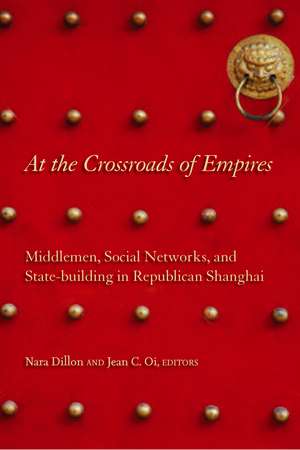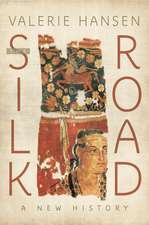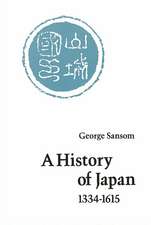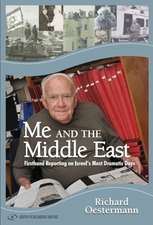At the Crossroads of Empires: Middlemen, Social Networks, and State-Building in Republican Shanghai
Editat de Nara Dillon, Jean Oien Limba Engleză Hardback – 28 noi 2007
To a degree uncommon in among Chinese cities, Republican Shanghai had no center. Its territory was divided among three (sometimes more) municipal governments integrated into various national states and empires. No government building or religious institution gave Shanghai a “center." Yet amidst deep cleavages, the city functioned as a coherent whole. What held Shanghai together? The authors' answer is that a group of middlemen with myriad connections across political and social boundaries created networks that held Republican Shanghai together.
Contributors Include: Sei Jeong Chin, Parks Coble, Bryna Goodman, Brian Martin, Elizabeth J. Perry, Kuiyi Shen, Jeffrey Wasserstrom, and Wen-hsin Yeh
Contributors Include: Sei Jeong Chin, Parks Coble, Bryna Goodman, Brian Martin, Elizabeth J. Perry, Kuiyi Shen, Jeffrey Wasserstrom, and Wen-hsin Yeh
Preț: 520.37 lei
Nou
Puncte Express: 781
Preț estimativ în valută:
99.58€ • 108.13$ • 83.65£
99.58€ • 108.13$ • 83.65£
Carte tipărită la comandă
Livrare economică 22 aprilie-06 mai
Preluare comenzi: 021 569.72.76
Specificații
ISBN-13: 9780804756198
ISBN-10: 0804756198
Pagini: 328
Dimensiuni: 152 x 229 x 23 mm
Greutate: 0.58 kg
Editura: Stanford University Press
Colecția Stanford University Press
ISBN-10: 0804756198
Pagini: 328
Dimensiuni: 152 x 229 x 23 mm
Greutate: 0.58 kg
Editura: Stanford University Press
Colecția Stanford University Press
Recenzii
"One can only admire the patience and the attention to detail that the author applies to reassembling the pieces of the puzzle. . . Offers a precise and concrete illustration of the realities."—Marie-Claire Bergère, Chinese Perspectives
Notă biografică
Jean C. Oi is William Haas Professor of Chinese Politics and was Director of the Center for East Asian Studies at Stanford. Her publications include Rural China Takes Off: Institutional Foundations of Economic Reform (1999). She is also co-editor, with Andrew Walder, of Property Rights and Economic Reform in China (Stanford, 1999). Nara Dillon is Assistant Professor of Political Studies at Bard College.
Descriere
Republican Shanghai was a heterogeneous city with no central institutions. Yet somehow it functioned coherently. What held the city together? The authors argue that networks of middlemen with boundless connections provided the glue.















